How to spend 48 hours in the laid-back city of Luang Prabang
Get the Lao down.
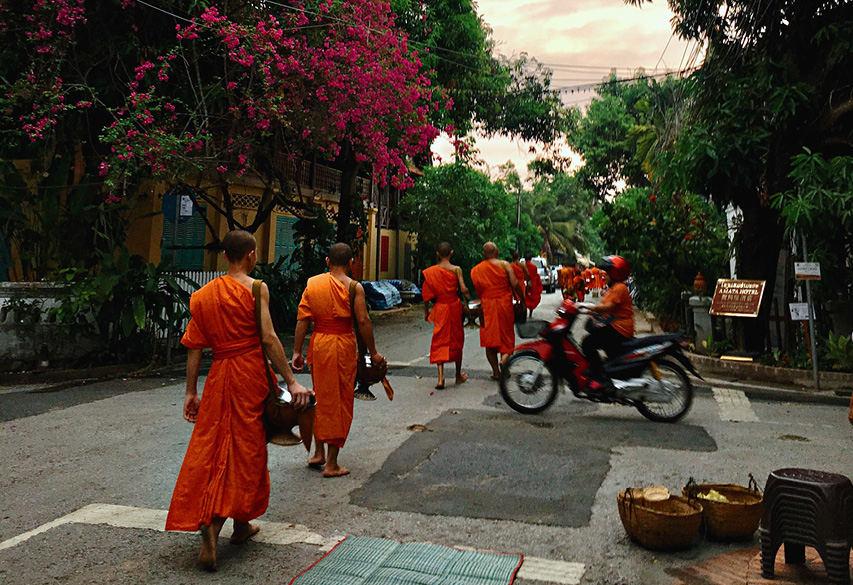
Tak Bat
6am: We know it’s cliché, but Tak Bat, or almsgiving, has been practiced in this part of the world since the 14th century. The sight of monks clad in saffron robes stands in stark contrast to the hazy, dim morning and will be sure to leave you feeling peaceful. Avoid the tourists and head to the Old Quarter, where a handful of local shops sell buckets of steamy, sticky rice. Book a local guide to plan out the whole morning for you from hotel pick-up, almsgiving arrangements, temple visits and market shopping sprees. We recommend Focus Asia (price from B800).
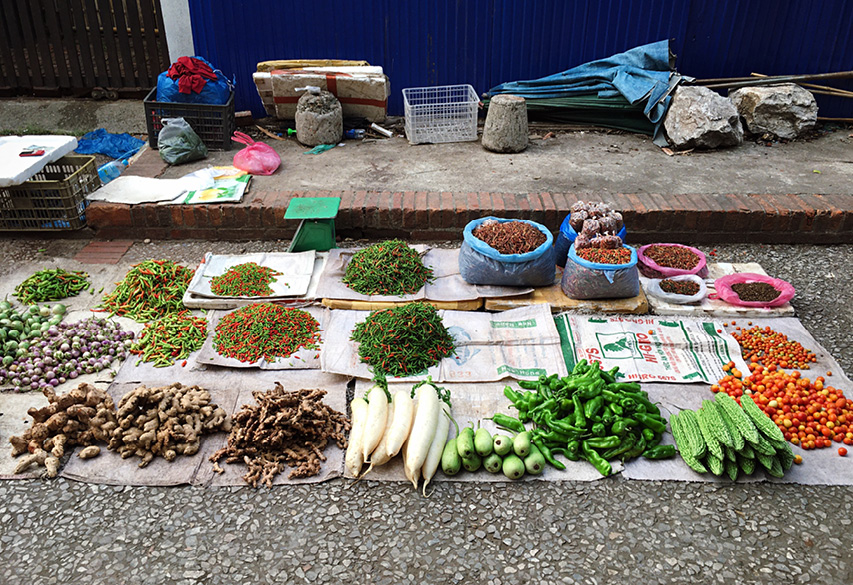
morning market
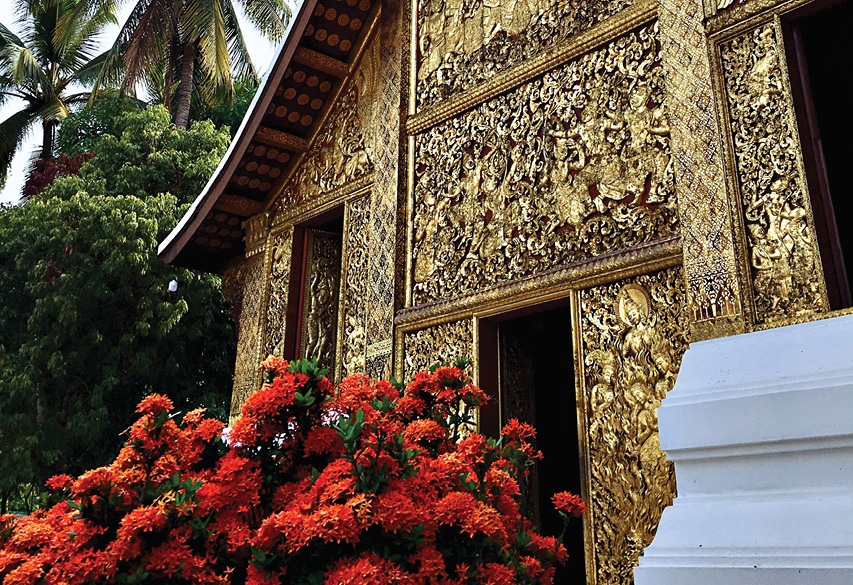
Wat Xieng Thong
9am: Early in the morning, head to the 25-hectare Pha Tad Ke botanical gardens (www.pha-tad-ke.com), a first-of-its-kind for the nation which acts as a regional research center and living museum for Lao’s native flora. It’s a 15-minute boat ride from Ban Wat That, which departs every hour from 9am to 4pm. While you’re there, try one of the enticing workshops like bamboo handicraft, herbal tea tasting, gardening and studying medicinal plants. They also offer full-day tours like the Thin Pha Trail Trek (B2,100) and World Heritage City Tour (B4,450). Entrance costs B890.
Noon: En route to Kuang Si waterfall, stop for lunch at the small house-restaurant, Carpe Diem. The place sits perched above its own private waterfall with a dining deck over a turquoise natural swimming pool. Guests are encouraged to jump in and you’ll see people digging into their food with their swimming suits on. The kitchen busts out traditional Lao classics, as well as Western faves. We recommend both. The pork larb (herbal minced pork salad) is superb, the mok (fish steamed in banana leaves with spices and herbs) is delicious and the ravioli is rich and comforting.
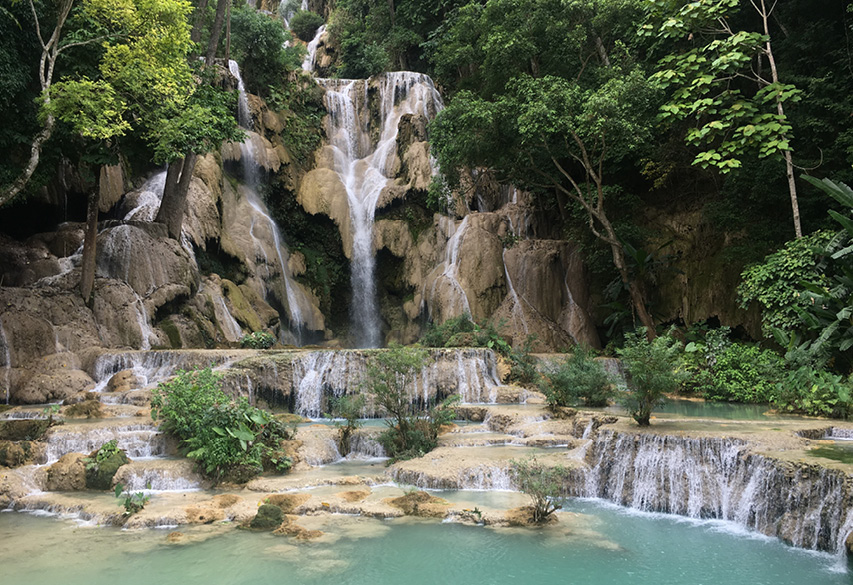
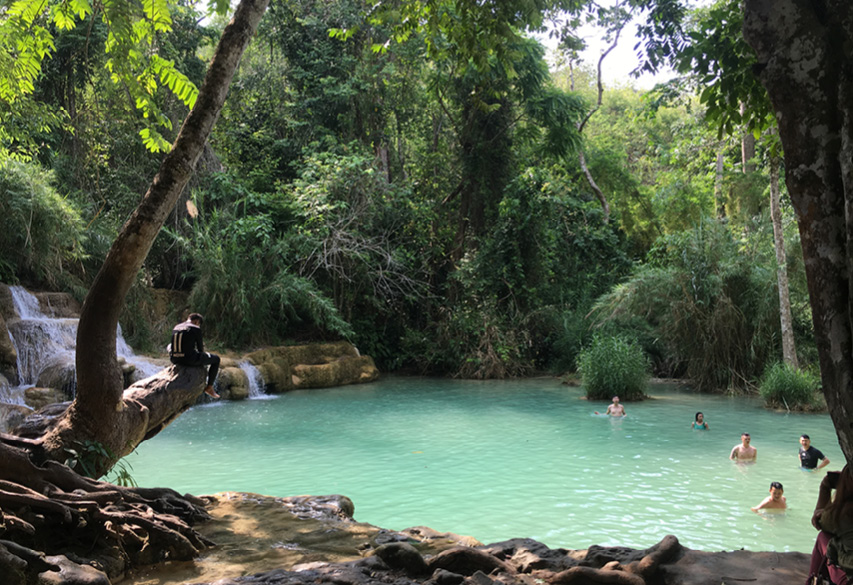
Kuang Si Falls
2pm: At Kuang Si Falls, water cascades tumble in stages down a shallow rocky slope, creating a series of falls and pools. Hiking your way upstream to the 50-meter-high waterfall will take you about 15 minutes. Don’t forget to pack your swimming suit. The water is crystal clear but shallow, making for a perfect natural swimming pool. The entrance fee is around B60. To get there, you can either take a shared tuk tuk with other tourists for about B175 each, or rent your own for B700 round-trip. Right at the waterfall’s entrance, there’s a small bear rescue center where you can watch a group of perky bears, some swinging on trees and some showing off their two-feet standing move. You won’t be charged a fee, but you can help with a small donation.
5pm: If you’re looking for a perfect sunset-watching spot, head to Phou Si (meaning “sacred hill”). This is the highest hill in Luang Prabang located right in the town’s center, boasting a 360-degree view of the city, Mekong and Nam Khan rivers. However, to get to the top, you’re required to climb up over 300 steps through a narrow, brick staircase. It’s worth it. Crowning the hilltop is Wat Chomsi, a small Buddhist shrine in dazzling gold dating back to 1804. Halfway up, take a break at Wat Tham Phousi, a small temple that rests inside a picturesque cave, where it houses a handful of Buddha statues. There are different sets of steps that you can take on the way down, with each leading to different temples. The hill entrance fee is about B70 per person.
6pm: Make Paste Laos your last meal in the city. The newly opened second branch of Paste by Asia’s Best Female Chef Bongkoch “Bee” Satongun sits inside The Apsara boutique hotel on the Nam Kham River. Dishes are inspired by traditional recipes noted down by great Lao royal chef Phia Sing in the early 20th century, featuring over 100 different wild ingredients that have been cured, pickled and fermented, like the crunchy fermented rice balls with sour sausage, kaffir lime zest and red curry paste, and stir-fried pickled cabbage, salt-cured mushrooms, fermented onion shoots, smoked pork knuckle and white ginger flower vinegar. Three tasting menus start from around B1,360 per person (minimum two people).
Thai Smile and AirAsia start roughly at the same price, from B2,560 return; while Bangkok Airways will set you back about B4,190 return.
1 THB = 285 LAK
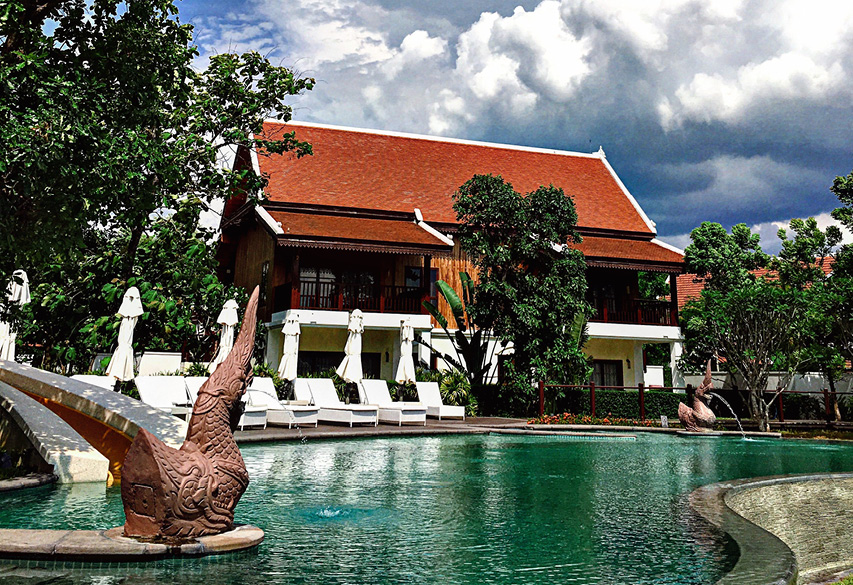
OVERVIEW: Situated on a 160,000-sq-meter plot of land, Pullman Luang Prabang is hugged by mountains, natural streams and rice paddies. It’s quite a distance from town, making for a perfect hideaway from the hustle-and-bustle of the city.
ROOM: The smallest of the 123 rooms and suites is 42 sq meters, while the singular two-bedroom pool villa is 270 sq meters and features a garden that can fit up to 50 people. Rooms come in subtle earthy tones and heavy wood decor, set under warm light fixtures. With so much space, it really creates a luxurious feel. The bathroom is as big as the bedroom, complete with a walk-in closet, separate rooms for toilet and shower area; while in the center sits a tub and a long wooden bench.
DINING: The single restaurant is run by a Laotian chef, who busts out delicious traditional dishes, cooked using vegetables grown onsite, with no twist and no compromising on the heat. His soop-pak (herbs and vegetable salad) and sai oo-ah (Laos’ version of sausage) are really something and great dipped in jaew (spicy chili relish). If you can’t stand the heat, go for his pumpkin soup for an equally delicious taste of the local fare. Breakfast has enough variety to keep you happy—be careful of over-stuffing.
FACILITIES: There are three pools that come in three different sizes, a fitness lounge, two bars and an extensive spa surrounded by vast rice fields.
RAVE: Staying at the resort feels like you’re in the middle of nowhere, perched on a hill overlooking the lush-green mountain range that wraps around the property in a 360-degree view.
RANT: Wi-fi sucked throughout our stay. You’re also 20 minutes from the city.
PRICE: The 42-sq-meter room starts from B3,300 a night (price includes breakfast).